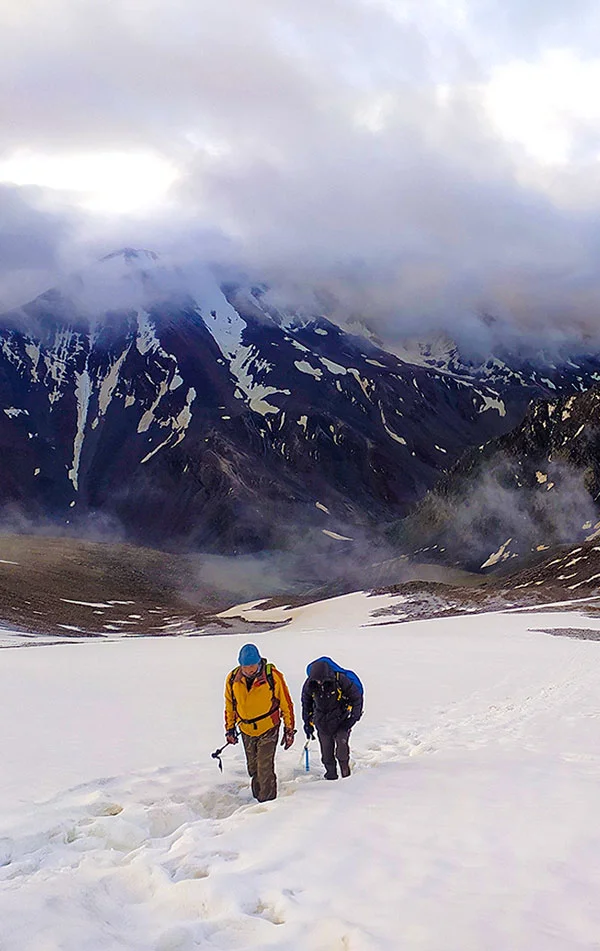
Region
Himachal Pradesh | India
Duration
8 Days
Max Altitude
20100 Ft.
Trekking Km
22 KM
Grade
Difficult
Help & Support
+91 8191004846 info@trekthehimalayas.com10:00 hrs to 18:00 hrs | GMT +5:30
Monday - Saturday | Sunday Closed
28900 /Person
- +5% GST (goods and services tax)
- Services Manali to Manali | Included Transport
- Addons
-
Backpack offload is optional
-
Choose add-ons during booking. If missed, log in and add them later.
-
Book off-load at least 10 days before the trek.
-
For offline bookings at the base camp, a convenience fee of Rs. 3200 applies.
-
Cancellations made before the trip date will receive a full refund.
Offload 3000
For more information. Please complete this form.
Help & Support
+91 991 772 4737info@trekthehimalayas.com 10:00 hrs to 18:00 hrs | GMT +5:30
Monday - Saturday | Sunday Closed
Overview
Trek Name: Yunam Peak Trek Expedition
Days: 8
Adventure Type: Trekking
Base Camp: Manali
Season:Summer | Monsoon | Autumn |
Month:April | May | June | July | August | September | October | November |
Country: India
Altitude: 20100 Ft.
Grade: Difficult
Rail Head: Pathankot is the nearest rail head to the base camp
Stay: Camping (Twin sharing) & Hotel/Guesthouse
Food: Meals while on trek & at Hotel/Guesthouse (Veg & Eggs)
Location: Himachal Pradesh
Distance: 22 Km.
Trail Type: Circle trail | Camping in various locations, starting and ending at the same point.
AirPort: Bhuntar, which is 52 km away from Manali
Highlights:
- +5% GST (goods and services tax)
- Services Manali to Manali | Included Transport
Yunam Peak is a rare six-thousand Himalayan trekkable peak on the same ranks as Stok Kangri that can fulfill the higher ambitions of trekking and adventure enthusiasts for climbing and lay the serious groundwork for technical mountaineering pursuits. A soaring presence in the Lahaul-Spiti locale, the Yunam Peak is not entirely unknown to those who have travelled by the Leh-Manali highway, though it is not as frequently climbed as the Stok and other peaks of the same club. The summit of Yunam has a great vantage point for an outstanding view of the C.B. Range and Mulkilla Range, and this is just one reason to scale the peak.
Yunam is located on the far side of Himachal where the mountains are terrifyingly rugged and sparse in greenery. The highest motorable road in the state ends in Baralacha La, only a few kilometers from Yunam base camp, where the pathways of Ladakh, Spiti, and Lahaul intersect. Crossing over from Manali to Keylong to Bharatpur- from where the trek begins, can be an adventure in itself as you are being transported from gentle undulations, green slopes, and apple orchards of Manali to the rugged and grey rocky mountain highs. The drive to this far end of the world is breathtaking in terms of changing topographies, the chills of starkly dropping temperatures, and bizarre emerald lakes glistening in the middle of nowhere in a cold rocky desert matrix. The way up from Bharatpur onwards features snow patches, mixed scree,
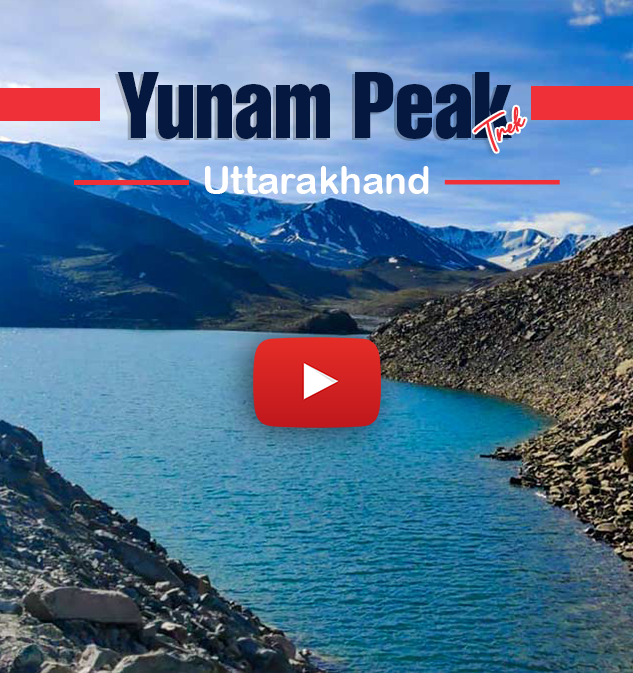
Who Can Participate
-
Age; 15 years.
-
Experience of any high altitude trek, at least 1 treks of 4,000m/13,100ft.
-
The climber must be fit and have sufficient stamina to cover 5 km of distance in 30 minutes without stress.
-
The climber should be able to carry a 12-16 kg backpack.
-
Pulse rate at rest must be in between (60 to 90 beats per minute)
-
Blood Pressure Reading must be in between (DIASTOLIC 70 – 90, SYSTOLIC 100 - 140 mm Hg)
-
Respiratory rate at rest must be in between (12 to 20 breaths per minute)
-
Should not have Liver and kidney issues
-
Should not have Diabetes Mellitus, Bronchial Asthma, Heart problems, Hypertension etc
-
No pacemaker implant
-
People with the Sinus issues, Epilepsy please contact to trek coordinator before booking the trek
-
If your BMI is not normal, Please contact our Trek coordinator before Trek booking.
Medical & Disclaimer Form (Mandatory Documents) Click here to download Medical & Disclaimer Form
- Government Employees can avail the benefit of Special Casual Leave (SCL) when you join us for a trekking expedition. As per the rules of the Pay Commission, Special Casual Leave can be availed for up to 30 days in a calendar year for trekking/mountaineering expeditions through a registered organization. Trek The Himalayas is a registered adventure tour operator by Indian Mountaineering Foundation (IMF) and Ministry Of Tourism (MOT)
- Trekkers have to apply for leave at least 20 days before trek departure date,
- This service is exclusive to Indian government employees and is applicable only for treks within India.
- Do mail at info@trekthehimalayas to apply and mention your booked trek date and trek name.
- Junior trekkers (below 15 years) should have a company of parents/guardians.
- Trekkers between 15 to 18 years can come solo with the disclaimer form signed by parent/guardian.
- Medical & Disclaimer Form (Mandatory Documents) Click here to download Medical & Disclaimer Form
Itinerary
Arrival Manali
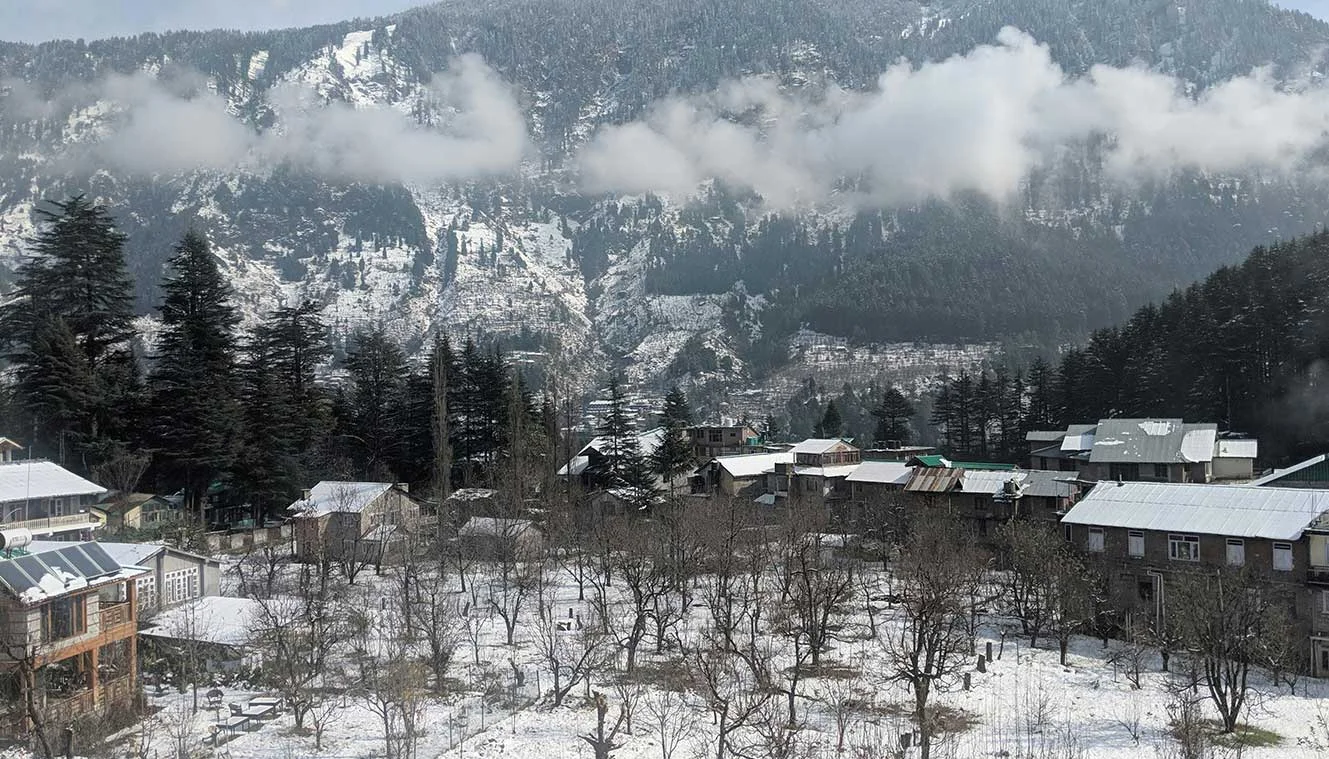
Manali to Keylong/Jispa
Your journey with us will begin from Manali. At 9 am, we will pick you up from the appointed place and start off on the Leh-Manali highway. Guaranteeing a sheer adventurous ride, this highway grooves through changing scenes of vast and empty mountains, passing the snow entrenched Rohtang Pass, Tandi- where the Bhaga and Chandra river meet, and the village of Sisha or Sissu where there is a magnificent temple of Raja Ghepan- the presiding deity of Lahaul valley. The Chandra and Bhaga rivers run by the line of our passage and create magnificent frames for photographing the dense mountains in the background.
At around 100 to 120 km from Manali we will reach the Keylong-Jispa area, approximately in time for lunch, i.e. 2 pm. These two towns nestling in the lap of the mountains are key areas where Lahauli ethnic culture is preserved. Our stay for the night will be tent.
A brief exploration of the site on this afternoon is mandatory for the cause of acclimatization. There are quite a number of attractive places to check out here—the Khardang and Shashur Monastery in Keylong top in our recommendation.
In Keylong, you will find working ATMs and telephone network coverage.
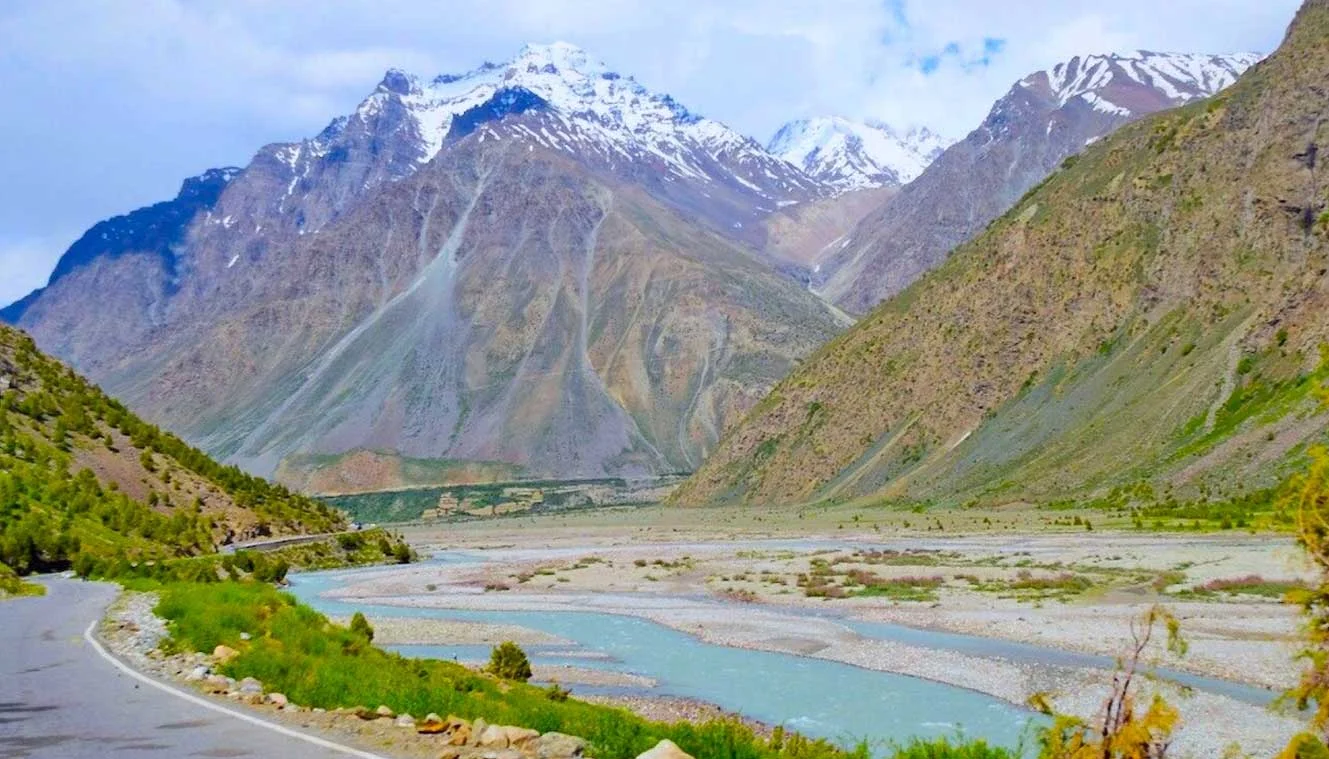
Keylong/Jispa to Bharatpur
The destination of Day 3 is Bharatpur, located at a driving distance 5 hour away from Keylong. At 4500m, Bharatpur is a windy cold desert rest point with a sparse locality which remains open only during season time.
We will try to make a few short stopovers on this four hour long journey—first at lakes Deepak Tal and Suraj, both mesmerizingly beautiful and of the colour sapphire, reflecting the skies and the mountains on a clear day. Suraj Tal is also recognized as the source of the Bhaga river which joins with river Chandra at Tandi, crossed earlier and becomes Chandrabhaga in the Himachal and flows as Chenab after entering J&K. On passage, we will cross Baralacha La- the highest motorable mountain pass.
We will be reaching Bharatpur at around 1:30 pm. Here, you can find stores for tenting equipment, trekking gears, and many delightful Dhabas. A special delicacy available in Bharatpur’s eateries is the flavoursome “butter tea”. This region also the starting point for Baralacha La trekking.
The night’s stay will be in tents at Bharatpur.
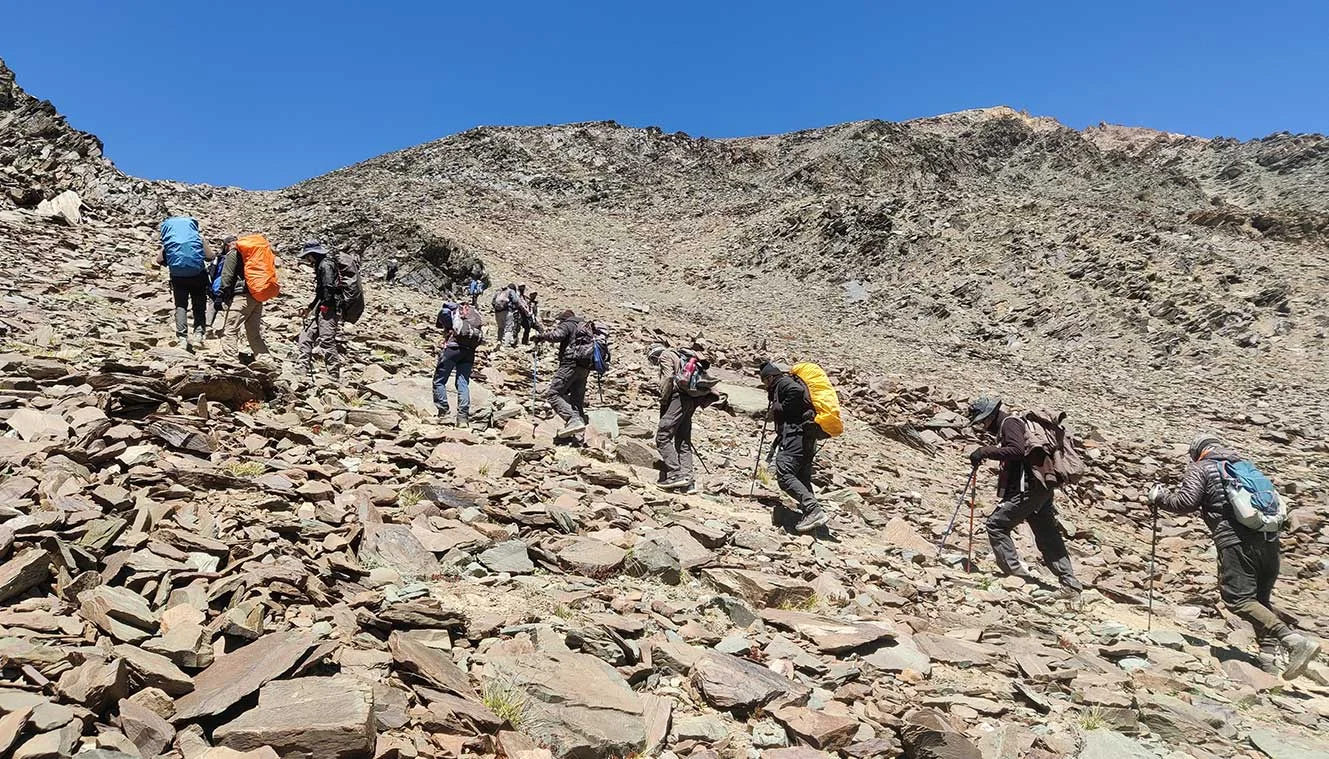
Acclimatization day
At this juncture, the massive altitude gain will start showing its colours. Mild headaches, nausea, and loss of appetite are common. Therefore, day 4 is kept entirely for adjusting to the climate and letting the body tune to the thinning air and temperature hitting the lows.
A lot of fluid intake is highly recommended for today, along with a little load carrying exercise (though heavy exhaustion is not advisable) and walking around in the barren landscape.
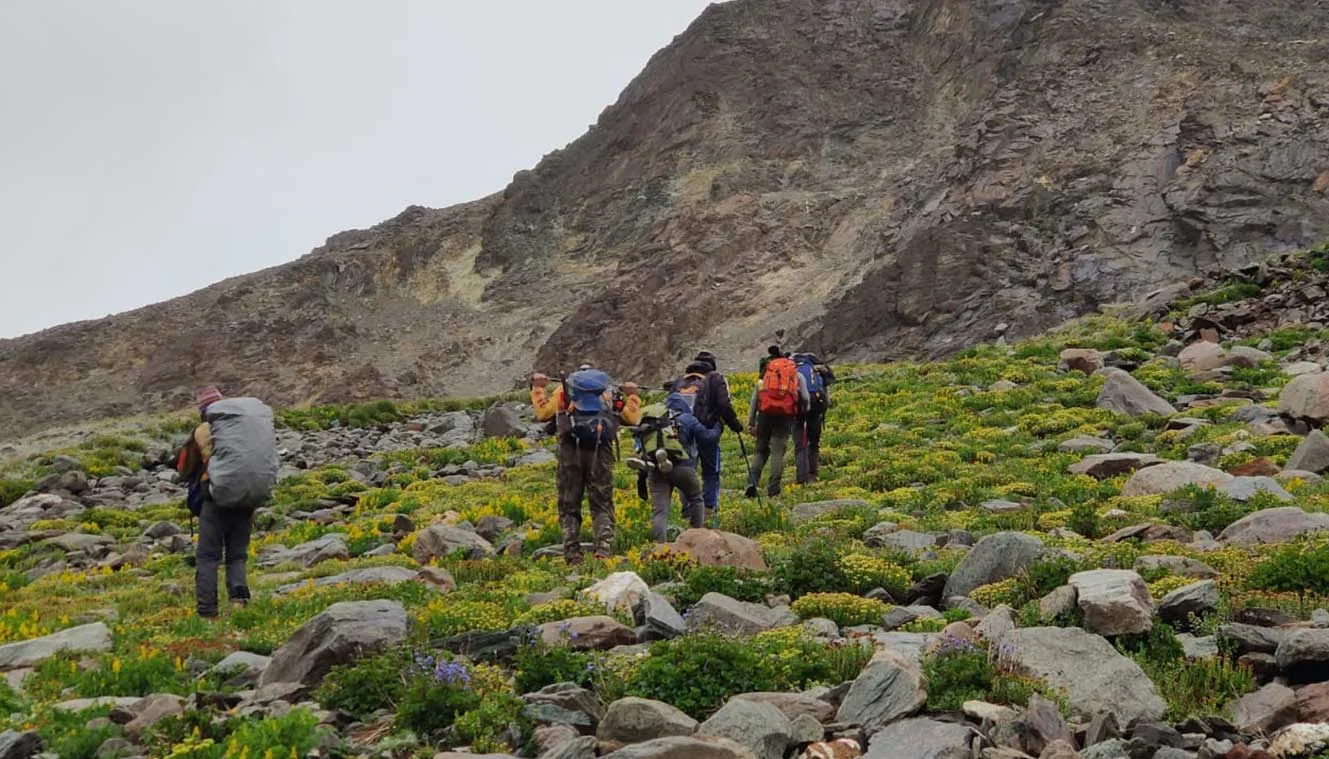
Bharatpur to Base camp
The fifth day’s trek commences early in the morning around 7 am.
Today’s trek will be a challenge with 4.5 km of steep climb on a gradually gaining ascent curve. Trek time can span a little over 5 hours. The boulder and moraine laden path will make inexperienced climbers prone to slipping. Today’s trek especially needs to be done with crampons as in the later half of the trek you will come by dense snow patches.
You will not need to carry 2-3 litres of water for this stretch as there will be many water points on the way. After one particular turn, the trek will continue along a water stream.
Base camp is expected to be reached by mid noon. Small lakes in this location make for a picturesque setting.
Since the next day’s journey starts at 3 in the morning, a sound sleep must be ensured for tonight.
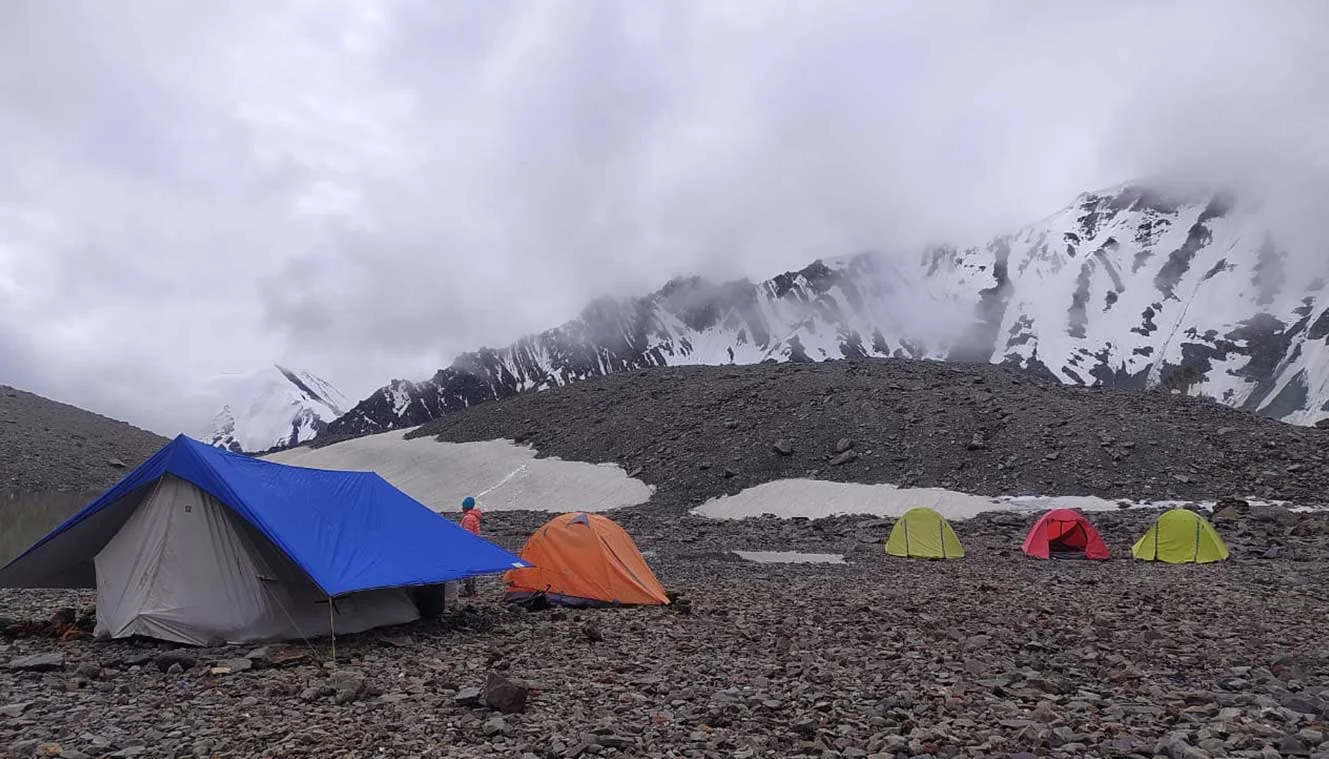
Base camp Acclimatization
Today is an easy day for you as you will do nothing but take rest and get along with the surrounding. You will dedicate a full day to get accustomed with the place and in knowing all the routes in detail. To spend some time you can also visit some of the nearby places. Since it is just a rest day, you are not supposed to sit in your camp, and sleep all day long. Physical fitness and outside surrounding are very important to view as such views you cannot see again in the near future.
Today you will also get to know all aspects of team work and methods that are included in climbing a top of a mountain covered with snow. Your trek leader or guide will give you proper training so that you learn how to climb in such hills. He will also acknowledge you about the challenges that you may face along the way.
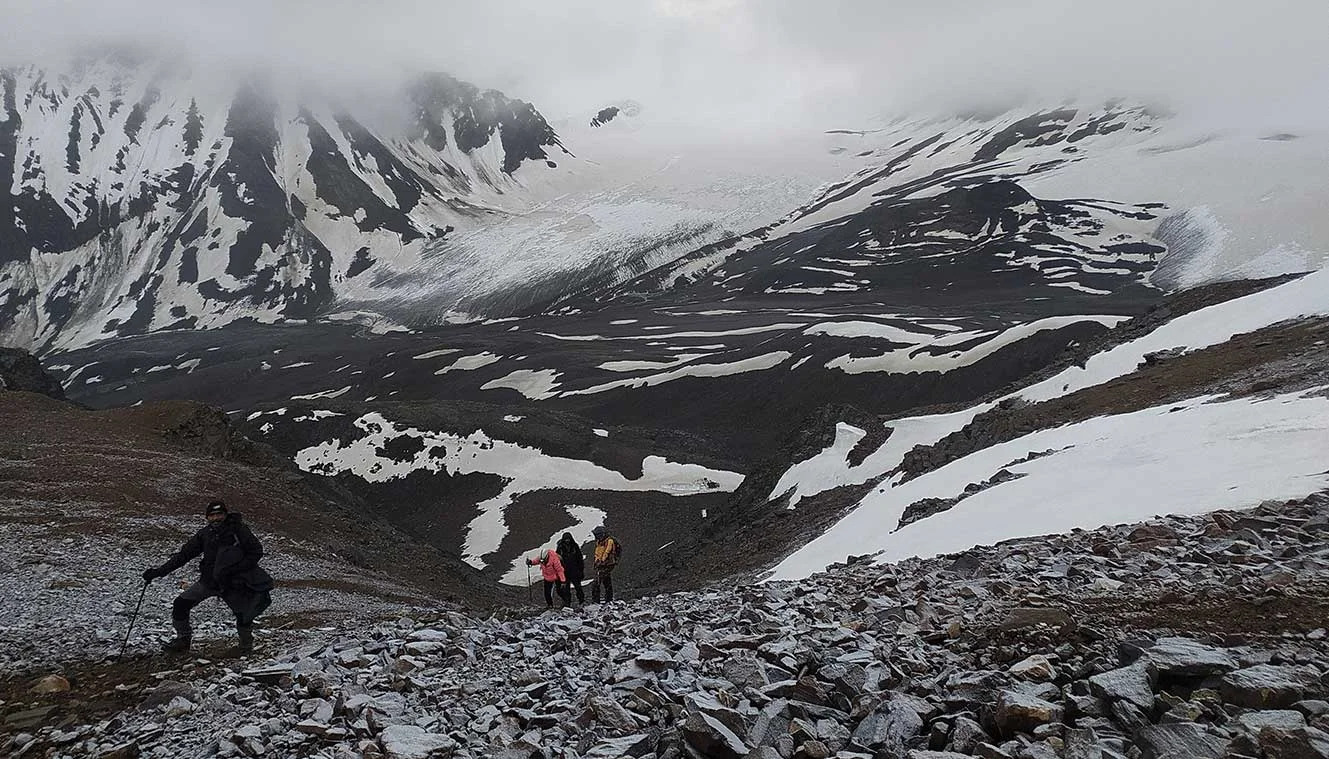
Base camp to Summit and back to Base camp
Our summit attempt begins at 6 in the morning on this climactic day. It is going to be an 8 hour battle against all odds, crossing a distance of 6.5 km of steep ascent. The terrain will be mostly moraine, sharp rock henge, and more snow covered areas than last day.
The water situation too, is going to be more critical than last day. Since there will be just one proper drinking water point on the trail, you need to come equipped with 3-4 litres per person in your day pack. The water point can be found nearly half an hour into the trek starting from base camp.
Expect numbing cold wind, the trials of advanced height, and associated breathing difficulties. The need to stay hydrated is more than ever in these hours. Though the path will be treacherous and taxing to climb, it will be palpable with ledges along the stony stretch to rest at from time to time.
After around 6 hours into the trek, the moraine cover will be replaced with thickening snow, giving another edge to the trekking experience. It is important for the group to bind up on harness at this point in the trek and move systematically. After an enduring stretch of semi technical climbing, summit would be reached.
The view from the top is out of the world, foraying into the sun struck pinnacles of Chandra Bhaga and Mulkilla Range of mountains, and the valley of Lahaul many many galaxies below, lying in a swathe of whiteness.
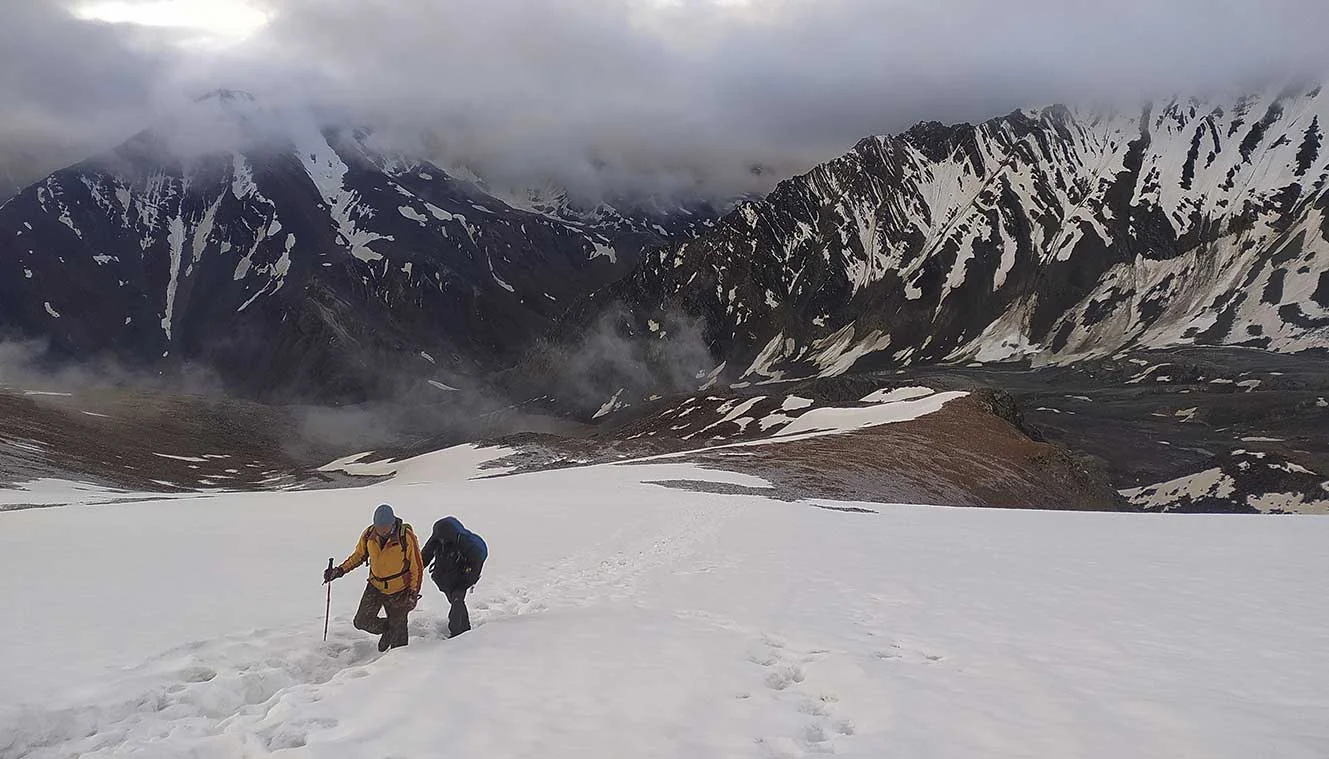
Base camp to Bharatpur and drive to Manali
After a goodnight’s rest at the base camp, down we go on day 8. A 4.5 km trek, followed by a 7 hour drive from Bharatpur will reach us in Manali between 6-7 pm.
You can schedule your further travels from here after 8.
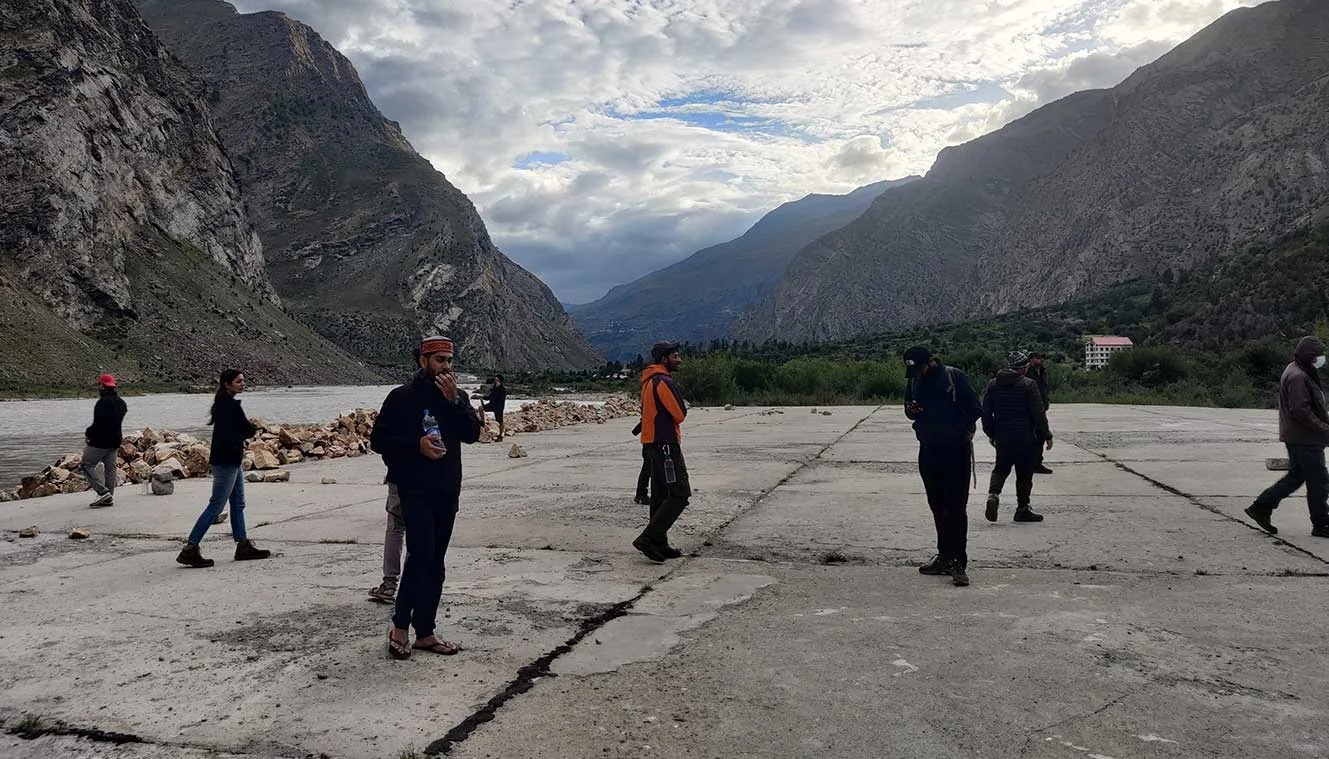
Day-1: Arrival Manali
- Check-in Hotel.
- Briefing after lunch approx 3 pm.
- In the evening go for sightseeing.
- Visit Hidimba Devi Temple, Vashist Kund and other major sightseeing points (avoid Rothang Pass).
Note:- Only stay hotel is included in the cost (food and sightseeing is excluded).
Day-2: Manali to Keylong/Jispa
- Pick up at 9 am, 5 hrs.
- Keylong 100 km (3080 m), Jispa 120 km (3200m).
- Via Rothang pass, Tandi (confluence of Bhaga and Chandra river) Sisa village (temple of Raja Ghapan).
- Drive along with Bhaga river.
- Stay in tent.
- Phone networks are available.
- Stay in tents.
- Last ATM.
Day-3: Keylong/Jispa to Bharatpur
- Altitude: 4,700m/ 15,500ft.
- Leave at 9 am.
- Drive: 90km, 5-4 hrs.
- On the way Deepak tal, Suraj Tal, Baralacha la 4890 m ( Himachal Pradesh highest motorable pass).
- Lunch at campsite.
- Stay in tents.
- Phone network till Patseo.
Day-4: Acclimatization day
- Rest and small hike for better acclimatization.
- Heavy exhaustion is not advisable.
- Drink good amount of water, keep body hydrate.
Day-5: Bharatpur to Base camp
- Altitude 5250m / 17,200ft.
- Trek: 4.5 km , 4 hrs.
- Altitude Gain: 550m/ 1,700ft.
- Train - Moraine.
- Ascent – gradual and steep.
- Many water points on the way.
- Walk along with small water stream, become terrible post lunch.
- Base Camp is nearby small lake.
- Stay in Tents on twing sharing Basis.
Day-6: Base camp Acclimatization
- Summit briefing and training.
- Sitting and sleeping all day in the camp is not advisable.
- Go for very small hike, visit nearby places.
- Early dinner and early to bed.
Day-7: Base camp to Summit and back to Base camp
- Altitude 6,100m/ 20,100ft.
- Trek: 6.5 km one way, 9-10 hrs.
- Train – Moraine, Sharp rocks, Few snow patch, Snow on the top.
- Steep ascent.
- Early start summit attempt at 2 am.
- Carry enough water there is only one water point, comes after half an hour from Base camp.
Day-8: Base camp to Bharatpur and drive to Manali
- Trek: 4.5 km ,2 hrs.
- Drive: 175 km., 8 hrs.
- Reach Manali in between 6 to 7 pm.
- Plan your further travel after 8 pm.
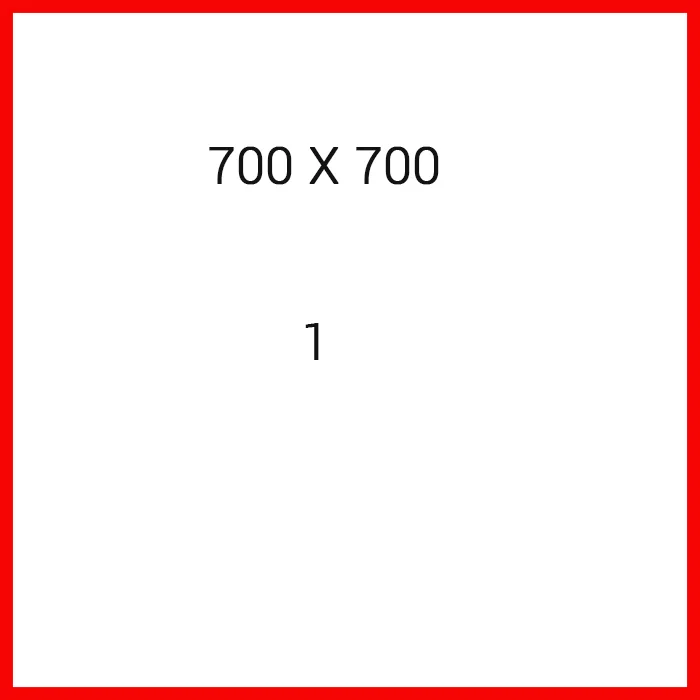
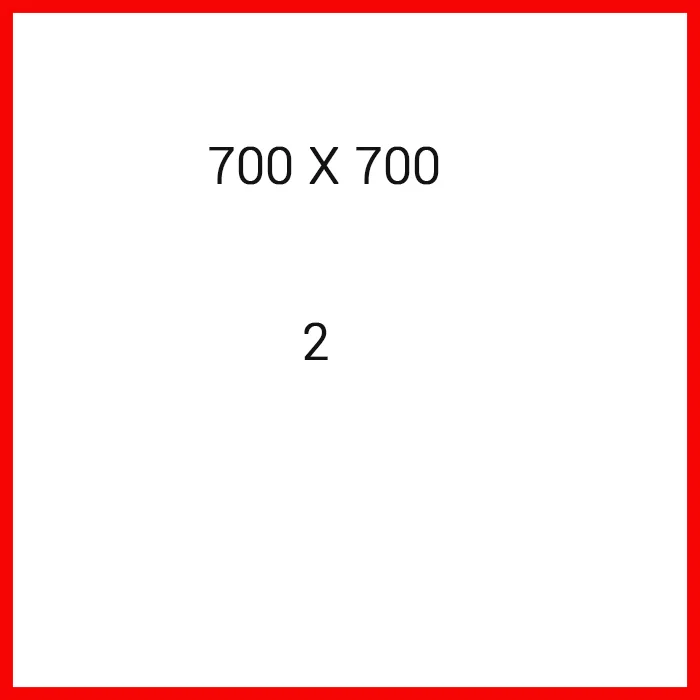
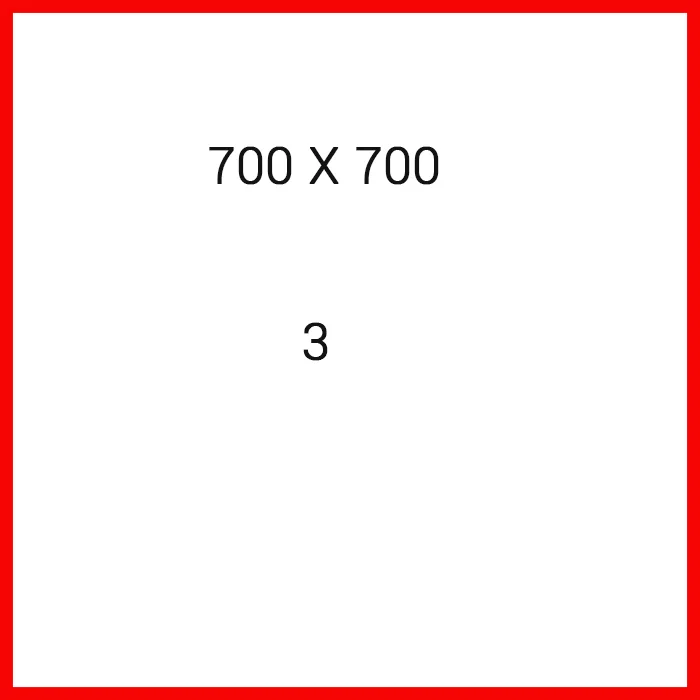
Important Links
- Medical & Disclaimer Form (Mandatory Documents)Click Here.
How To Reach
It is essential for everyone to arrive at Manali (11:00 am).
Once you have reached the assembly point of the trek in Manali, TTH will manage the rest of your travel arrangements, if you have opted for TTH's pick-up service, you can select this option during the booking process by adding it as an add-on.
Options
1. Take overnight bus to Manali from Delhi or Chandigarh, taking a bus from Chandigarh is the most ideal option.
-Chandigarh to Manali Bus: 10 hours.
-Delhi to Manali Bus: 14 hours is hectic and takes more time.
We always recommend going for the govt. Buses over the private ones outside the bus station as based on the experience we have found that there are very high chances of delay involved with private buses. Also, govt. Buses are always more reliable. Whichever bus you choose, just make sure to reach Manali at 10 am.
3. You can take a flight to Bhuntar Airport (but we would not recommend it because of the high prices of the flight and very high chances of cancellations), Manali is just a couple of hours away and you can easily get a bus or a private taxi till there. If you do plan to come via Bhuntar, make sure to reach at least a day before the trek starts.
4. You can even come via train, Pathankot railway station is from where you can get direct buses to Kullu/Kasol that is 300 km from there and would take an overnight journey. Even in this case, reach a day before at Manali.
If you prefer to travel independently, you can either take a government bus or book a private cab. Your trek coordinator will provide guidance on how to arrange for the bus or cab booking.
Arrive in Manali by 6:00 pm.
The designated drop-off point is Manali Gov bus stand.
Please consider planning your subsequent travel arrangements after 8:00 pm.
TTH offers comfortable transportation through Tempo Traveler, Bolero, or equivalent vehicles. If you wish to upgrade your mode of transportation, please contact your trek coordinator for further assistance.
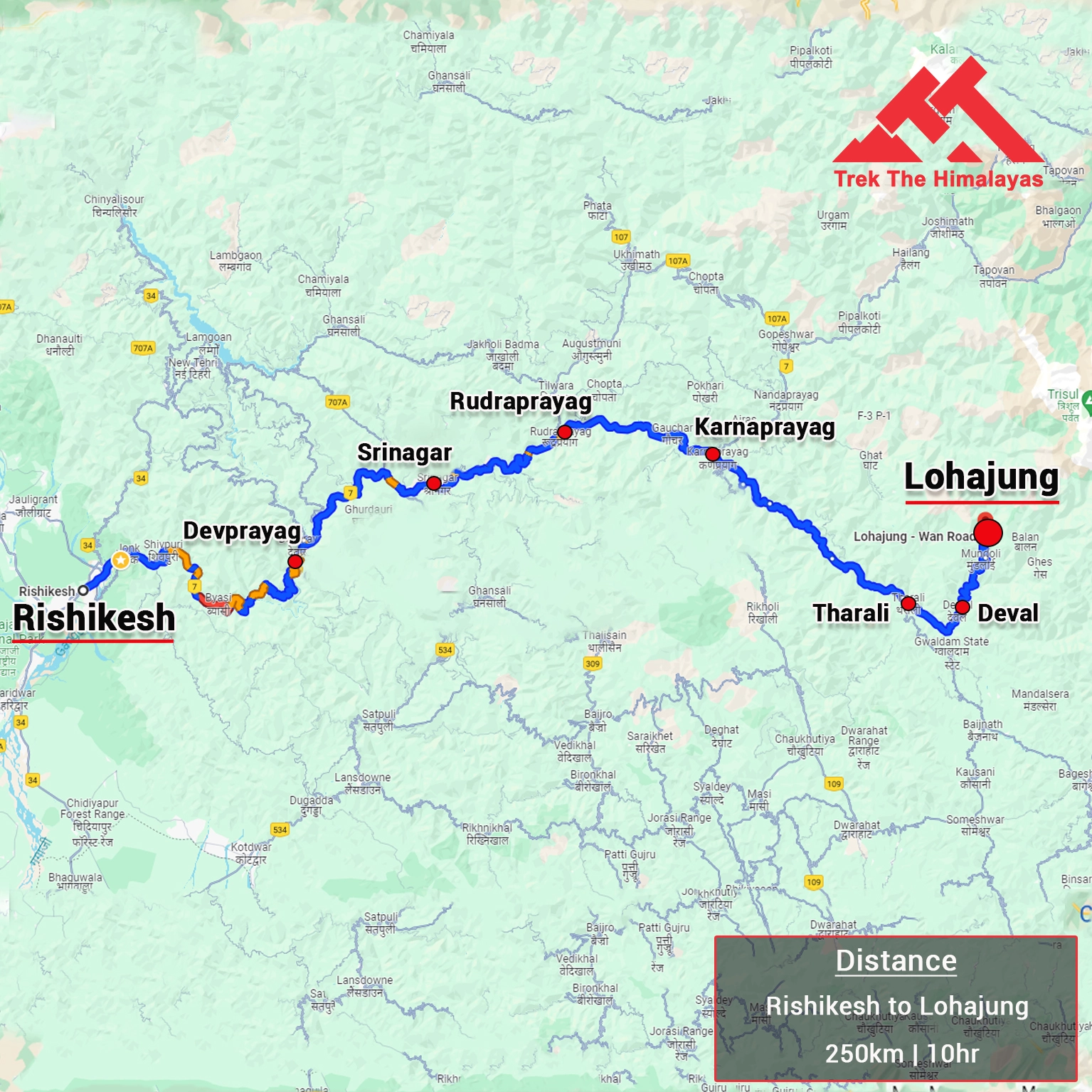
Cost Terms
Inclusion
1. Accommodation (as per the itinerary):
- Guest house, Home stay, Camping.
2. Meals (Veg + Egg):
- From Day 2 dinner to Day 8 breakfast.
3. Support:
- 1 Versatile base camp manager: handles communication and deploys extra manpower in emergencies.
- 1 Mountaineering & First aid qualified professional trek Leader.
- 1 Experienced high altitude chef.
- Local experienced guides (Number of guides depending on the group size).
- Enough support staff.
4. Trek equipment:
- Sleeping bag, Sleeping liners (if required), Mattress, Utensils.
- 3 men all season trekker tent (twin sharing), Kitchen & Dining tent, Toilet tent.
- Camping stool, Walkie talkie.
- Ropes, Helmet, Ice axe, Harness, Gaiters & Crampon (if required).
5. First aid:
- Medical kit, Stretcher, Oxygen cylinder, Blood pressure monitor, Oximeter, Stethoscope.
6. Transportation (as per the itinerary):
- Transport from Manali to Bharatpur and back ( As per the itinerary).
7. Mules/porters to carry the central luggage.
8. Clock room facility available at the base camp for additional luggage
9. All necessary permits and entry fees, Upto the amount charged for Indian
10. Services from Manali to Bharatpur.
Exclusion
- Insurance (Mandatory).
- Food during the transit.
- Any kind of personal expenses.
- Mule or porter to carry personal luggage.
- Emergency evacuation, hospitalization charge or etc.
- Anything not specifically mentioned under the head Inclusion.
Things can be provided on demand and availability (participant has to pay extra for these things).
1- Satellite phone/set phone - is a type of mobile phone that connects via radio links via satellites orbiting the Earth instead of terrestrial cell sites like cellphones. Therefore, they can operate in most geographic locations on the Earth's surface.
2- Gamow/PAC HAPO Bag (Portable Hyperbaric Bag) - is a unique, portable hyperbaric chamber for the treatment of acute mountain sickness (AMS), also known as altitude sickness.
3- AEDs (Automated External Defibrillators) - are portable life-saving devices designed to treat people experiencing sudden cardiac arrest, a medical condition in which the heart stops beating suddenly and unexpectedly.
Cancellation terms:
Cancellations prior to 25 days from the start of the Trip
Refund options
- 5% deduction of trek fee
- 100% cash voucher for any trip till one year
- Transfer your trek (any trek, any date) to your friend
Cancellation between 24 days and 15 days to the start of the Trip
Refund options
- 30% deduction of trek fee
- 100% cash voucher for same trip till one year
- 85% cash voucher for any trip till one year
- Transfer your trek (same trek, any date) to your friend
Cancellation between 14 days and 10 days to the start of the Trip
Refund options
- 50% deduction of trek fee
- 80% cash voucher for same trip till one year
- 70% cash voucher for any trip till one year
- Book the same trek, in the same season, with any other batch
- Transfer your trek (same trek, any date) to your friend
Cancellation less than 9 days to the start of the trek
Refund options
- No cash refund
- 20% cash voucher for the same trip till one year
- 10% cash voucher for any trip till one year
- Transfer your trek (same trek, same date) to your friend
Note- If a booking is made using a voucher or discount code, the policies related to vouchers and discounts cannot be modified.
In the unlikely event that TTH cancels a trek prior to the scheduled departure date:
While it is extremely rare for TTH to cancel a trek, we understand that unforeseen circumstances or natural disasters may occasionally require us to do so before the scheduled departure. These circumstances could include continuous rain or snow, thunderstorms, snowstorms, landslides, floods, earthquakes, or any other natural calamity that poses a risk to the safety of our trekkers. Additionally, unforeseeable events such as local riots, curfews, pandemics, lockdowns, government orders, or any similar situations that compromise the safety of the trekking experience may also necessitate a cancellation.
In the event of such a cancellation, TTH will provide you with a voucher equivalent to the amount you paid for the trek. This voucher can be redeemed for any of our treks within the next year, allowing you to still enjoy an adventure with us at a later date.
Note
-
The issuance of a voucher is not applicable in situations where you are required to descend from the trek for any reason. The trek leader may make the decision to send you down from the trek due to factors such as insufficient fitness level, symptoms of Acute Mountain Sickness (AMS), high blood pressure, exceeding the designated turn-around-time, health concerns, or if you are found smoking, drinking, or violating the rules set for the trek. In such cases, the provision of a voucher does not apply.
In the rare event that TTH shifts a trek:
We would like to emphasize that weather conditions in high-altitude areas are highly unpredictable and can undergo sudden changes at any time, irrespective of the day. Additionally, circumstances beyond our control, such as natural disasters, political unrest, pandemics, and lockdowns, may impact the feasibility of conducting a trek. In cases where we are unable to proceed with an event due to such circumstances that are beyond our direct control, we will make every effort to provide you with an alternative trek that is safer and more suitable.
In such situations, we will issue a voucher to offset the cost difference between the originally scheduled trek and the alternative trek. This voucher can be redeemed at any time within one year from the date of issue. Please note that a refund fee or reimbursement of the cost difference is not applicable in these cases.
Note:
- Change of trek batch is dependent on the availability of seats in the batch
- In case of transferring a trek to a friend, he/she should satisfy all the mandatory requirements put forward by TTH
- TTH holds the right to change/cancel the policies, without prior notice
- Cash refund is applicable only in case of bookings made without using any promotional offer code or vouchers
Cash Voucher Terms:
- This is a non-transferable voucher
- The voucher cannot be merged with any other offer of Trek The Himalayas
- The voucher is valid for Trek booked directly with Trek The Himalayas in India
- To avail the voucher please use your register phone number or e-mail id
- All the other Terms of booking a trek with Trek The Himalayas are applicable to the voucher
- Trek The Himalayas holds rights to add/remove any of the Terms and Conditions without prior notice
Itineraries are based on information available at the time of planning and are subject to change. "Trek The Himalayas" reserves the right to change expedition dates, people or itineraries as conditions warrant. If a trip must be delayed or the itinerary changed due to bad weather, road conditions, transportation delays, government intervention, airline schedules, sickness, or other contingency for which TTH or its agents cannot make provision, the cost of delays and/or other changes are the responsibility of the participant. TTH reserves the right to decline, or accept, any individual as a trip member for any reason whatsoever.
Trek Essentials
PDF Of Trek Essential Download
| Backpack with rain cover | (50 - 60 ltr) with comfortable shoulder straps |
| Day pack with rain cover | 20 - 30 ltr (If off-load opted) |
| Walking stick | Advisable (At least one) |
| Water Bottle / Hydration pack | 2 bottles of one liter each, People who use hydration pack 1 hydration pack and 1 bottle of one liter, Carry at least one thermos flask. |
| Small size tiffin/lunch box | 1 Nos |
| Snacks | Energy bars, dry fruits, electoral/ors |
| Personal Medical Kit | Consult your doctor |
| T-Shirt (Synthetic quick dry) | 1 Full & 2 Half sleeves |
| Fleece T-shirt | 1 Nos |
| Wind stopper / Fleece jacket | 1 Nos |
| Windproof Jacket | 1 Nos |
| Down feather / Hollow jacket | 1 Nos |
| Thermal inner (Upper and Lower) | 1 Pair |
| Trek Pant (Synthetic quick dry) | 2 Nos |
| Wind stopper / Fleece Pant | 1 Nos |
| Waterproof gloves | 1 Pair |
| Fleece / woollen gloves | 1 Pair |
| Poncho / waterproof Jacket and pant | 1 Nos |
| Sunscreen | 1 Nos |
| Moisturiser | 1 Nos |
| Chap-stick / Lip balm | 1 Nos |
| Toothbrush and toothpaste | 1 Nos |
| Toilet paper & Wipes | 1 Nos |
| Soap / hand sanitizers | 1 Nos |
| Antibacterial powder | 1 Nos |
| Quick dry towel | 1 Nos |
| Head torch | 1 Nos. (Avoid Hand torch) |
| Sun Cap | 1 Nos |
| Woolen cap | 1 Nos. |
| Balaclava | 1 Nos. |
| Buff / Neck-gaiters | 1 Synthetic & 1 Woollen |
| Sunglasses | UV with dark side cover, People who wear spectacles - (A)- Use contact lenses | (B)- Photo chromatic glasses |
| Trekking shoes | 1 Pair (Waterproof, high ankle, good grip) |
| Floaters / flip-flops | 1 Pair |
| Cotton socks | 6 pairs |
| Woollen socks | 1 pairs |
| Gaiters | 1 Pair (TTH provides when required) |
| Micro spikes | 1 Pair (TTH provides when required) |

Frequently Asked Questions(FAQ)
To register with TTH, visit our website - www.trekthehimalayas.com and create your account. To create your account you will need to use your email address and fill in all the details, set your unique password and your account is ready to use.
- To book a trek with TTH, you first need to register with us and create an account.
- Choose the trek that you want to do and click on available dates.
- You will land at the login page, fill in the required details.
- Add Participants, choose add-on services click on the Pay now button, choose your preferred payment method, and make the payment. TTH accepts multiple payment options, including credit/debit cards, net banking, and UPI.
- You will receive a confirmation email from TTH with all the necessary details about the trek, including the meeting point, transportation, accommodation, and other important instructions.
please send an email to us at info@trekthehimalayas.com or reach out to the numbers provided in the Help and Support section of your Trek Page. We will ensure that your issue is promptly resolved.
To book services such as off-load luggage and transportation, you can find them listed as add-ons. These additional services can be booked at the time of your initial booking. If you miss booking add-ons during the initial reservation, you can log in anytime and easily book 4 days before the departure date add-ons through the platform.
In such a situation, please log in to your account and transfer your trek or date to the desired one within 12 hours or drop us an email at info@trekthehimalayas.com 10 days before the departure date of the trek. After the initial 12-hour period, any changes will be processed according to the cancellation policy.
We recommend visiting our "Suggest Me a Trek" page. By filling out the form, our experts will contact you with the best possible trek options based on your preferences and experience level. Alternatively, you can reach out to us via email at info@trekthehimalayas.com or give us a call using the numbers provided on our website for personalized assistance and recommendations.
Family treks differ from regular treks by focusing on ease of difficulty, offering shorter durations for younger participants, Kid-friendly and easily digestible foods, child-friendly activities, maintaining a higher guide ratio for diverse age groups, and implementing additional safety measures for families.
Family Trek with Kids recommendation Only Dayara Bugyal and Chopta Chandrashila Trek.
Minimum age for TTH treks is typically 7 years, though this may vary depending on the specific trek.
Yes, you can take a kids to a high-altitude trek with a parent. Discuss with a trek expert before booking a trek.
Junior trekkers (below 15 years) should have a company of parents/guardians.
Trekkers between 15 to 18 years can come solo with the disclaimer form signed by parent/guardian.
Medical & Disclaimer Form (Mandatory Documents) Click here to download medical and disclaimer form
Physical Fitness: Ensure your child is physically fit. Engage them in regular exercise, outdoor activities, and hikes to build stamina and endurance. Hydration: Emphasize the importance of staying hydrated at high altitudes. Encourage your child to drink water regularly, even if they don't feel thirsty. Proper Nutrition: Provide a well-balanced diet with sufficient carbohydrates for energy and foods rich in iron to prevent altitude sickness. Adequate Sleep: Ensure your child gets enough sleep in the days leading up to the trek. Quality rest is crucial for altitude adaptation. Educate on Altitude Sickness: Teach your child about the symptoms of altitude sickness, such as headache, nausea, and dizziness. Encourage them to communicate any discomfort immediately. Appropriate Clothing and Gear: Dress your child in layers to adjust to changing temperatures. Ensure they have appropriate trekking gear, including sturdy footwear. Positive Mindset: Foster a positive mindset. Encourage your child, and let them know it's okay to take breaks when needed. Medical Check-Up: Schedule a medical check-up before the trek to ensure your child is fit for high-altitude activities. Consult with a healthcare professional about any potential health concerns.
TTH takes special care to provide wholesome and nutritious food for children on treks. Here are some of the foods that are typically served for children:
Breakfast: For breakfast, TTH serves a variety of options like porridge, cornflakes, bread, butter, jam, honey, boiled eggs, omelettes, and pancakes. Children can choose from these options to fuel themselves for the day's trek.
Lunch: For lunch, TTH serves lunch which includes rotis, vegetables, rice, dal, and salad. The rotis are usually made fresh on the trek and are a good source of carbohydrates. The dal and vegetables provide protein and other essential nutrients.
Snacks: TTH provides healthy snacks like fresh fruits, dry fruits, energy bars, cookies, and biscuits to keep the children energized throughout the day.
Dinner: For dinner, TTH serves a hot and wholesome meal which includes soup, rice, dal, vegetables, and a non-vegetarian dish (if requested in advance). Children can also choose from a variety of desserts like custard, jelly, and fruit salad.
Dietary requirements: If a child has any special dietary requirements, TTH can cater to those needs as well. For example, if a child is lactose intolerant or allergic to nuts, the kitchen staff can make arrangements to accommodate those requirements.
Choosing the right trek for a beginner can be a bit overwhelming as there are many factors to consider such as distance, elevation gain, terrain difficulty, weather, and time of year. Here are some tips that can help you choose the right trek for a beginner:
1. Determine fitness level: Assess the fitness level of the beginner to understand their physical capabilities. This will help you select a trek that is challenging but not too difficult.
2. Choose a well-traveled trail: A well-traveled trail will have more amenities such as signposts, water stations, and shelter. It is also safer as there will be other hikers on the trail.
3. Consider the length of the trek: For beginners, it is recommended to start with a shorter trek that can be completed in a day or two. This will help them get acclimatized to trekking and build their confidence.
4. Look for gradual elevation gain: Choose a trek with a gradual elevation gain rather than steep ascents. This will make the trek easier and more enjoyable.
5. Check the weather: Check the weather forecast before selecting a trek. Avoid treks during the monsoon season or winter when the trails can be slippery or dangerous.
6. Research the trail: Read about the trail to get an idea of the terrain, altitude, and difficulty level. This will help you select a trek that is suitable for the beginner.
7. Consult with an expert: If you are unsure about which trek to choose, consult our trek expert Mr. Nitin (+91 70600 59773) between 10 AM to 6 PM (Tuesday - Friday). Mr. Nitin will provide you valuable advice and guidance.
Overall, it is important to choose a trek that is enjoyable, challenging but not too difficult, and suitable for the beginner's fitness level and experience.
It is not recommended for a beginner to choose a difficult Himalayan trek. Trekking in the Himalayas can be physically and mentally challenging, especially if you are not used to the high altitude, steep slopes, and rugged terrain. Choosing a difficult trek without the proper experience, fitness level, and preparation can be dangerous and put you at risk of altitude sickness, injury, and other hazards.
If you are a beginner, it is recommended to start with an easier trek and gradually build up your skills and experience. This will help you understand the challenges of trekking in the Himalayas, and also prepare you physically and mentally for a more difficult trek in the future. It is also important to choose a trek that matches your fitness level, experience, and interest.
There is no specific age limit for a beginner trekker. However, it is important to consider your physical fitness, health condition, and personal interests before embarking on a trek. Trekking in the Himalayas can be physically and mentally demanding, and requires a certain level of physical fitness and endurance.
If you have any pre-existing medical conditions or are above a certain age, it is recommended to consult with a doctor before embarking on a trek. It is also important to listen to your body and take breaks as needed during the trek to prevent exhaustion or injury.
We recommend visiting our "Suggest Me a Trek" page. By filling out the form, our experts will contact you with the best possible trek options based on your preferences and experience level. Alternatively, you can reach out to us via email at info@trekthehimalayas.com or give us a call using the numbers provided on our website for personalized assistance and recommendations.
Yes, you can join the trek. We have fixed departure groups where you can simply book your trek and we will take care of curating a group.
Before you start the trek, it is recommended that you make all the necessary phone calls as during the trek you may or may not receive network coverage, once you come back to the Base Camp, you can reconnect with your family via phone once again. You can share your trek coordinator contact detail with your family members to get the latest updates about your trek batch.
At TTH, we provide wholesome and nutritious meals during the trek. The food is vegetarian and includes a variety of dishes such as rice, dal, vegetables, chapati, paratha, pasta, noodles, and soup. We also offer snacks such as biscuits, and salty, and dry fruits during the trek. Special dietary requirements such as vegan, gluten-free, or Jain food can also be arranged if informed in advance.
If you are allergic to some foods, you need to let us know in advance so that we can make arrangements accordingly.
TTH is a trekking company that prioritizes the safety of all its participants, including women trekkers. They have a comprehensive safety system in place, which includes a dedicated team of experienced and trained trek leaders and support staff who are equipped to handle emergency situations and provide first aid.
TTH also takes specific measures to ensure the safety and comfort of women trekkers. They have a separate tent accommodation for women trekkers, female trek leaders, and support staff. They also provide separate toilet facilities for women and encourage a safe and respectful environment for all trekkers.
Moreover, TTH has a strict policy against any kind of harassment and has a zero-tolerance policy towards such incidents. They have a designated Internal Complaints Committee (ICC) to investigate and address any complaints related to harassment or misconduct. Overall, TTH has a good reputation for safety and responsible trekking practices, and women can feel comfortable and safe while trekking with them.
In case you are the only women in the group, we provide a single sleeping arrangement. Also, during the trek, the trek leader will always remain by your side to provide optimum safety and reassurance.
You can reach out to the trek coordinator to inquire about the number of female trekkers and their respective states who have booked the trek. Please note that the trek coordinator cannot disclose personal details of any trekker. Once you've confirmed your booking, a WhatsApp Group will be created for all the trekkers in your batch. This allows you to connect with fellow trekkers before the trek begins.
While many of our treks are led by female trek leaders, however, it is not possible to know which trek leader is assigned to which group. But nonetheless, whether the trek leader is male or female you can be completely assured of your safety and security with us.
Yes, it is possible to trek with periods. However, it is important to take some extra precautions and preparations to ensure a comfortable and safe trekking experience.
Here are some tips that can help you trek during your period:
1. Use menstrual hygiene products that you are comfortable with, such as tampons, pads, or menstrual cups. It is recommended to carry enough supplies for the entire duration of the trek.
2. Pack wet wipes, hand sanitizer, and plastic bags to dispose of used hygiene products.
3. Wear comfortable and breathable clothing that allows for easy movement and reduces friction. Avoid wearing tight or restrictive clothing that can cause discomfort.
4. Carry pain relief medication, such as ibuprofen or acetaminophen, in case of menstrual cramps.
5. Stay hydrated and maintain a balanced diet to support your energy levels and overall health.
6. Take breaks as needed and listen to your body. If you feel uncomfortable or experience any unusual symptoms, seek medical attention immediately.
It is also recommended to consult with a doctor before going on a trek during your period, especially if you have a pre-existing medical condition or are taking medication. By taking necessary precautions and being prepared, you can have a safe and comfortable trekking experience even during your period.
We provide proper disposal facilities for sanitary pad disposal during the trek.
We offer three person tents with twin-sharing for optimum comfort. A woman trekker will share a tent with another woman trekker and if you are the only woman in the group, you will be given a single accommodation for your comfort and privacy.
Yes, we do provide gears on rent. You can book it using you TTH account directly.
Mountaineering qualified Experienced and first aid certified Trek Leader, First Aid Certify local guide, Cook, helpers and supporting staff.
People suffering from Bronchitis, Asthma, High blood pressure, Epilepsy (got faints), TB , Heart problem or on higher BMI side are strictly not allowed to go on any Himalayan trek. Apart from this if you had any medical history, please let us know.
No. Alcohol and smocking isn’t allowed while on trek. It is totally misconception that it will keep you warm. Your body need to acclimatize properly and for that eat properly and drink enough water; these things will keep you warm.
Toilet tents provide a convenient solution for answering nature's call in the great outdoors. Dry toilets, in particular, offer a highly sanitary approach. By digging a pit and utilizing mud and a shovel, you can easily cover up your waste. This method ensures cleanliness and hygiene while camping or exploring in the forest.
Remember to pack essential toiletries to complete your outdoor bathroom kit and maintain proper personal hygiene during your adventures. With these practices in place, you can enjoy nature while also respecting it.
Layer Up From Head To Toe
Eat Full Meals, never sleep empty stomach
You can keep warmee (if you’re more susceptible to cold).
Use sleeping bag in right way and don’t leave free space in sleeping bag.
For upper body
– Thermal layer
– T-shirt (full-sleeves)
– Fleece T-shirt (for extreme colds)
– Fleece layer
– Thick Jacket/Down Jacket
– Waterproof or Windproof layer (outermost layer, when it is snowing or raining)
- For Lower Body
– Thermal layer
– Hiking pants (normal) or Winter hiking pants
Based on how warm you feel you can skip any of the above layers. Your outer later should be windproof since it is windy at high altitude.
The idea behind layering is that the more insulation you have the less cold you feel, and instead of wearing a very thick jacket if you wear multiple layers, your body will be better insulated against the cold.
Yes, we provide micro spikes and gaiters, if required.
Mandatory documents: 2 xerox of ID having address (addhar card/driving license), 2 Passport size photographs, hard copy Medical form signed & sealed by doctor, disclaimer form sign by trekker and high altitude insurance.
No. We don’t but we can suggest you good hotel/Stay nearby pick up location.
Yes, trekker must carry 2 water bottles 1 litre each so they can refill it at campsite for drinking and keep themselves hydrate.
You should buy shoes which has these three features –Good grip, Ankle Support and additional water resistant layers. Generally, we advise Quechua Trek 100, MH 500 and MH 100.
Your return transport is also included in trek fee if you're opting for service Dehradun to Dehradun ; we use Tempo Traveller/ Tata Sumo/Max/Boloero kind of vehicle.
No one is forced to go on. There is always enough staff to split the party according to need and regroup later at the camp. Most people have no trouble reaching the highest campsite. If some members decide not to climb the final distance they can wait for the climbers to come back down the same way or take a lateral path to the descent route.
We always have a first aid kit close at hand. Serious injuries are rare. Porters will assist injured climbers to the base of the mountain and onward to a clinic or hospital. Kilimanjaro International Airport is very near Marangu Gate if evacuation to the US or Europe is advisable.
Yunam Peak Trek is located in Himachal Pradesh.
The altitude of Yunam Peak is 20,100 ft.
Yunam Peak Trek is a difficult-grade trek.
The best time to do the Yunam Peak Trek is summer (Mid Apr-Jun), monsoon (Jul - Aug), and autumn (Sep - Mid Nov).
Yunam Peak Trek is an 8-day long trek.
Please carry the following documents and hand them over to the trek leader at the base camp.
1. Medical Disclaimer filled and signed by a certified doctor (MBBS).
2. Original and printed copies of ID and address proof (Aadhar/Voter ID/Driving License)
3. 2 Passport-size photographs.
Our batch sizes for Expeditions like Yunam Peak are capped at a smaller size of about 15 people. This is to ensure optimum safety and for a high success ratio of the summit.
During the Yunam Peak Trek, you will stay in camps (twin-sharing) on the slopes.
At TTH, we provide wholesome and nutritious meals during the Yunam Peak Trek. The food is vegetarian and includes a variety of dishes such as rice, dal, vegetables, chapati, paratha, pasta, noodles, and soup. We also offer snacks such as biscuits, and salty, and dry fruits during the trek. Special dietary requirements such as vegan, gluten-free, or Jain food can also be arranged if informed in advance.
Yes, it is highly recommended to hire a professional trekking service provider for the Yunam Peak Trek. The Yunam Peak is located in the remote and challenging terrain of the Indian Himalayas, and having an experienced professionals by your side can greatly enhance your safety and overall trekking experience.
For the Yunam Peak Trek, it is crucial to have the right gear and equipment to ensure your safety, comfort, and preparedness in the challenging Himalayan terrain.
Here is a list of essential items you should consider packing:
1. Trekking Gear:
Sturdy trekking boots with ankle support
Trekking poles for stability and support
Backpack with rain cover and adjustable straps
Sleeping bag suitable for cold temperatures
Sleeping pad for insulation and comfort
Headlamp or flashlight with extra batteries
Water bottles or hydration bladder
Trekking clothes (moisture-wicking base layers, insulating layers, waterproof and windproof outer layers)
Thermal gloves, warm hat, and neck gaiter or balaclava for cold temperatures
Sunglasses with UV protection and sunscreen
2. Mountaineering Gear (if attempting the summit):
Mountaineering boots with crampon compatibility
Crampons and ice axe
Harness and carabiners
Helmet
Ascender and descender devices
Prusik loops and slings
Rope (if required)
3. Personal Essentials:
Personal medications and a first aid kit
High SPF sunscreen and lip balm
Insect repellent
Personal toiletries and wet wipes
Quick-drying towel
Snacks and energy bars for sustenance
Personal water purification system or water purification tablets
4. Miscellaneous:
Maps and navigation tools (compass, GPS device)
Camera or smartphone for capturing memories
Power bank or extra batteries
Multi-tool or Swiss Army knife
Duct tape and ziplock bags (handy for repairs and waterproofing)
The Yunam Peak Trek is challenging and remote in the Indian Himalayas, and it is generally recommended to undertake it with a guide or in a group, especially if you have limited experience in high-altitude trekking or mountaineering.
Solo trekking in challenging and remote areas requires a high level of experience and expertise in navigation, route finding, and mountaineering skills. You should have prior experience in trekking at high altitudes and be comfortable with the potential risks and challenges that come with it.
The Yunam Peak Trek might have sections that are challenging to navigate, especially if you are not familiar with the area. A guide or experienced trekking partner can help you with route finding, ensuring you stay on the right track and avoid potential hazards.
.webp)
